From the Treasury-Fed Accord to the Mid-1960s
1951-1965
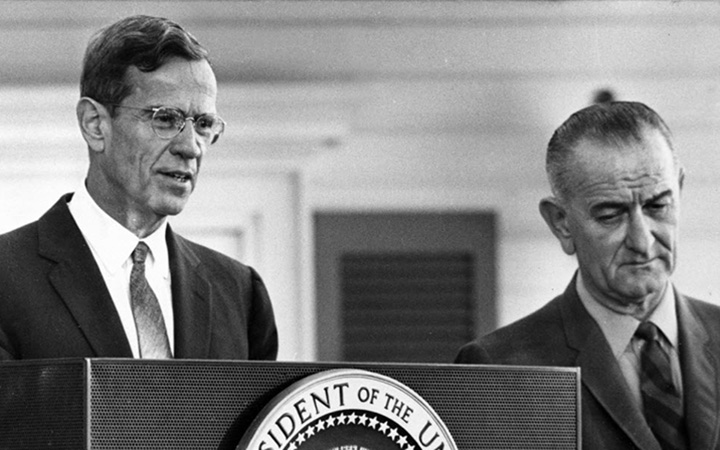
William McChesney Martin, Jr. was chairman of the Board of Governors and the Federal Open Market Committee from April 1951 until January 1970. Low and stable inflation along with generally robust growth characterized most of his tenure. Only toward the end of the 1960s did inflation rise. During this period, the Fed used the independence gained with the Treasury-Fed Accord to create a new kind of monetary regime. In a policy Martin termed "lean against the wind," the FOMC moved short-term interest rates in a way that countered unsustainable strength or weakness in economic activity. That policy, which was aimed at macroeconomic stability, contrasted with the pre-World War II policy, which focused on preventing speculation presumed to create unsustainable asset bubbles.
In setting short-term interest rates (conditions in the money market), the FOMC engaged in open-market purchases exclusively in Treasury bills. With this practice, termed "bills only," it allowed market forces to determine long-term government bond rates. The FOMC could then monitor its credibility with the bond markets. Evidence of an inflation premium in bond rates would be evidence that markets were skeptical that the Fed would implement its lean-against-the-wind procedures in a way disciplined by the long-term objective of price stability.
When Martin became chairman in 1951, he brought with him important personal qualities and beliefs that subsequently shaped the character of the Fed. Martin embodied the ideals of integrity and devotion to public service. In 1938 at the age of 31, he became president of the New York Stock Exchange. As president of the Exchange, Martin was naturally a defender of free enterprise. Later, as chairman of the Export-Import Bank after World War II, he traveled to the Soviet Union to facilitate the transfer of war materials as part of the lend-lease program. That experience impressed him with the productivity of free enterprise. Martin, who described inflation as "a thief in the night," believed that price stability should be an overriding objective of the central bank (Board of Governors 1955).
An understanding of Martin's achievement requires recognition of the intellectual void concerning central banking into which he stepped upon becoming chairman. The international gold standard, which had provided a nominal anchor for the price level, had collapsed in World War I. Although countries attempted to reconstruct it in the 1920s, in 1931 the reconstructed gold standard began its ultimate collapse. Without the nominal anchor of the gold standard, the dominant real bills view among central bankers in the 1920s and 1930s provided a misleading guide to central bank policy.
According to the real bills view, the central bank should allow the market place to determine the amount of credit that banks extend. The role of the central bank was to prevent banks from extending credit for speculative purposes. However, the dominant Keynesian consensus that emerged after World War II provided no alternative to the discredited real bills view. In fact, the Keynesian consensus only envisioned a minor role for monetary policy. The experience of World War II, which combined full employment with massive government spending, persuaded Keynesian economists that macroeconomic stabilization should concentrate on fiscal policy. If central banks played any useful role, it was simply to keep long-term rates of interest low. Keynesians saw powerful real forces like the monopoly power of large corporations and unions as more important determinants of the price level than central bank policy.
In contrast, by the time of the outbreak of the Korean War in June 1950, policymakers at the Fed saw the experience of World War II through the lens of price controls and suppressed inflation. They did not want to repeat that experience in the Korean War. Starting in 1942, the Fed had pegged the term structure of interest rates at a low level in order to assure cheap funding for government debt. The peg placed a ceiling of 2.5 percent on long-term government bonds. Pressure from the Treasury obliged the Fed to maintain its rate peg after the end of the War. As assistant secretary for international affairs at the Treasury, Martin had seen how the Fed's interest rate peg prevented the Fed from limiting the creation of bank reserves produced by the surge in lending when the Korean War threatened to become a third world war in fall 1950. In contradiction to real bills views, Martin believed that the Fed had the responsibility to control the creation of bank credit and bank reserves.
While at the Treasury in early 1951, Martin had conducted negotiations with the Fed over the end of the interest rate peg. With the Treasury-Fed Accord of March 1951, the Fed regained control over interest rates. As part of the agreement, Board of Governors Chairman Thomas McCabe resigned and President Truman appointed Martin to the Fed. Truman had assumed that Martin would continue to advance the Treasury view over interest rates. However, Martin asserted the independence of the Fed. A few years after his appointment as chairman, in a chance encounter on Fifth Avenue in New York, Martin crossed paths with Truman. Truman simply said, "Traitor," and continued on (Hetzel and Leach 2001a).
Martin sought stability of the price level as opposed to the modern objective of low inflation. Consistent with his views on free enterprise, Martin developed procedures for the control of inflation that did not involve government intervention into the price setting of private markets or the allocation of credit. In the 1950s, apart from the United States, central banks operated with quantitative controls on the extension of bank credit and on the allocation of credit. Governments used price and wage controls to control inflation.
As part of Martin's noninterventionist approach to the control of inflation, the Fed helped to create a government bond market that operated without support from the Fed—a market with "depth, breadth, and resilience" (Hetzel and Leach 2001b). That effort led to the present market structure in which broker/dealers make a market in government securities. Under the policy of "bills only," the New York Desk confined its operation to the purchase and sale of short-term Treasury securities. Without Fed intervention, the bond market developed into an indicator of the inflationary psychology of markets.
Fundamentally, a central bank defines the monetary regime through the way in which it conditions markets to anticipate how its instrument (the funds rate or short-term interest rates) will change in response to incoming information about the economy. By the early 1960s, the Martin FOMC had firmly established an environment of expected price stability. That is, there was no doubt that changes in short-term interest rates would be vigorous enough to prevent inflationary psychology (positive inflation premia in bond rates) and inflation.
Martin understood the importance of broad public support for the independence of the Fed. To this end, he made two institutional changes. Historically, the locus of power within the Fed had resided at the New York Fed. Martin moved the center of policymaking to Washington and away from New York, which in the public mind was associated with Wall Street. To do so, Martin had to win a fight with Allan Sproul, president of the New York Fed. Debate centered over the policy of bills only with Martin wanting to confine System transactions to Treasury bills and Sproul wanting to influence the entire term structure of interest rates through transactions at all maturities. The governance issue turned on whether the manager of the System Open Market Account would report to the president of the New York Fed or to the FOMC. In 1956 when Sproul lost these battles, he resigned.
Furthermore, in order to lay the foundations of Fed independence, Martin reinvigorated the federal character of the Fed by expanding decision making to the entire FOMC instead of confining it to a smaller Executive Committee. He also spent a large amount of his time on regional bank governance, for example, by working to appoint capable directors of the regional banks. Today, the FOMC is unique as an institution because of its combination of presidential appointees and regional representatives appointed by private boards.
The Eisenhower administration supported Martin's objective of price stability. In 1957, in response to an increase in inflation to 3%, the Fed tightened monetary policy and the economy entered into a sharp recession in August 1957. In 1960, in response to gold outflows, the Fed again pursued a restrictive monetary policy, and the economy entered into recession in early 1960. As a result, in the early 1960s, the assumption of price stability conditioned expectations in financial markets.
In the 1960s, the political system became progressively more hostile to Martin's focus on price stability. The Kennedy administration feared a gold crisis and the Treasury was concerned about the threat to the dollar posed by gold outflows. However, with Operation Twist, the Fed and the Treasury backed away from relying solely on changes in short-term interest rates to counter international payments imbalances. Under Operation Twist, the Fed substituted long-term for short-term Treasuries in an attempt to raise short-term rates and lower long-term rates. The hope was that higher short-term rates would discourage capital outflows and lower long-term rates would encourage investment.
Lyndon Johnson became president with Kennedy's assassination in fall 1963. With the passage in early 1964 of the tax cut originally proposed by Kennedy, a political consensus developed in favor of the promise of Keynesian economics that aggregate-demand management could deliver low unemployment at an acceptable cost in terms of inflation. Congressmen like Henry Reuss and Wright Patman charged that if the Fed raised interest rates it would be thwarting the will of Congress, as expressed in the 1964 tax cut, to make low unemployment a national priority.
In the Johnson administration, the Council of Economic Advisers clashed with Martin over the timing of increases in the Fed's interest rate instrument. James Tobin, a member of the Council, summarized the difference as one of "levels" versus "first-differences." That is, the Council wanted the Fed to refrain from raising rates until the unemployment rate approached its presumed full-employment level of 4%. Martin believed that the Fed should raise rates early in an economic recovery when the economy began to grow vigorously.
Appointments to the Board of Governors by Kennedy and Johnson also meant that Martin had to deal with an increasingly Keynesian Board of Governors and the prospect of a divided house if he challenged the political consensus. According to Keynesian models, there was a trade-off between policy instruments: monetary policy could be accommodative if fiscal policy was tight. In summer 1966, the FOMC did raise interest rates but it did so in the context of what was then a large deficit apart from wartime. Starting in 1967, Martin worked with Treasury Secretary Henry Fowler in an attempt to get a tax increase that would bring the government deficit into surplus and, presumably, remove the pressure on interest rates.
However, achieving agreement between President Johnson and Wilbur Mills, chairman of the House Ways and Means Committee, who wanted cuts in Johnson's Great Society programs, proved to be a long process. Not until June 1968 did Congress pass an income tax surcharge, which briefly turned the federal government deficit into a surplus. However, despite the tax increase, money growth remained high and inflation rose. By 1969, Martin realized he had made a mistake and pursued a restrictive monetary policy to bring inflation and inflationary expectations under control. In 1969 in the Board library, he told the other governors that he had failed. With the end of his term in January 1970, he ran out of time to restore price stability.
Martin believed that the Fed had responsibility for price stability and that it should achieve price stability without intervention into either the price setting of private markets or the allocation of credit. Martin's successor at the Fed, Arthur Burns, held more conventional ideas and the Burns' Fed operated in a very difficult intellectual and political environment.
Bibliography
Board of Governors of the Federal Reserve System. Memories of William McChesney Martin, Jr. Chairman of the Board of Governors of the Federal Reserve System, April 1951 through January 1970. Washington, DC: Board of Governors of the Federal Reserve System, 1999.
Board of Governors of the Federal Reserve System. "Minutes of the Federal Open Market Committee." August 2, 1955.
Bremner, Robert P. Chairman of the Fed: William McChesney Martin, Jr. and the Creation of the American Financial System. New Haven, CT.: Yale University Press, 2004.
Daane, J. Dewey. "Perspective on Monetary Policy." Federal Reserve Bank of Richmond Monthly Review (March 1970): 2-8.
Hetzel, Robert L. The Monetary Policy of the Federal Reserve: A History. Cambridge: Cambridge University Press, 2008.
Hetzel, Robert L. The Great Recession: Market Failure or Policy Failure?Cambridge: Cambridge University Press, 2012.
Hetzel, Robert L. and Ralph F. Leach. "The Treasury-Fed Accord: A New Narrative Account." Federal Reserve Bank of Richmond Economic Quarterly 87 (Winter 2001a), 33-55.
Hetzel, Robert L. and Ralph F. Leach. "After the Accord: Reminiscences on the Birth of the Modern Fed." Federal Reserve Bank of Richmond Economic Quarterly 87 (Winter 2001b), 57-64.
Tobin, James. Interviewed by Robert Hetzel, January 27, 2000. Available on FRASER.
Romer, Christina D. and David H. Romer. "A Rehabilitation of Monetary Policy in the 1950's." American Economic Association Papers and Proceedings 92, no. 2 (May 2002): 121-7.
Written as of November 22, 2013. See disclaimer and update policy.

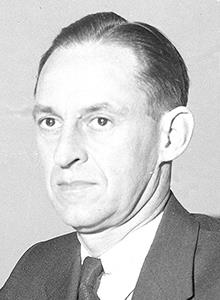
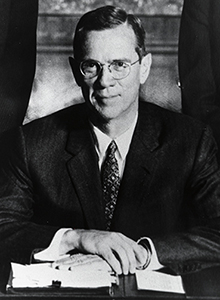
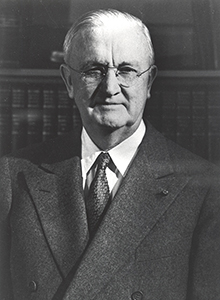
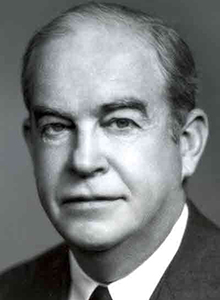
 X
X  facebook
facebook
 email
email